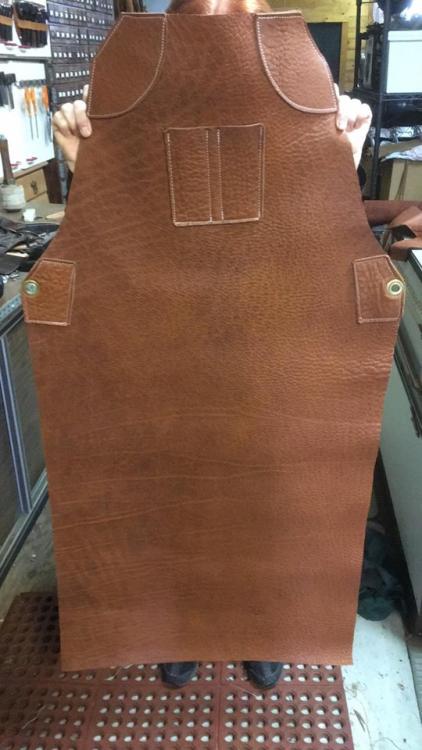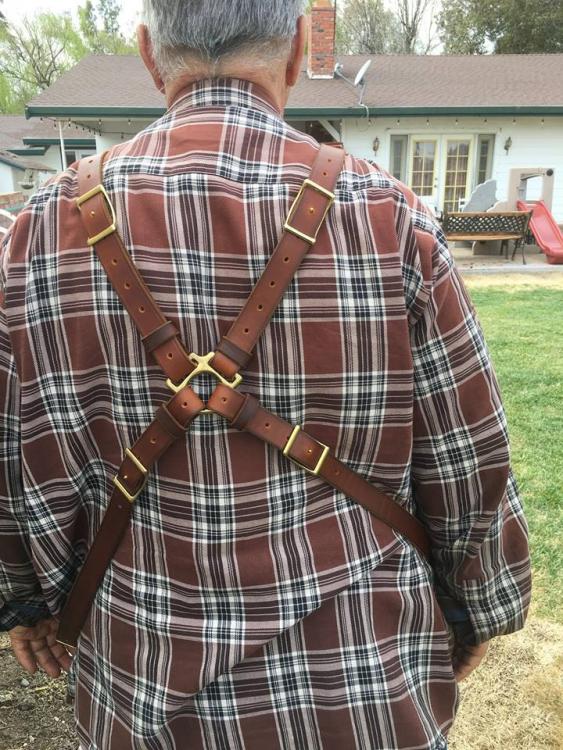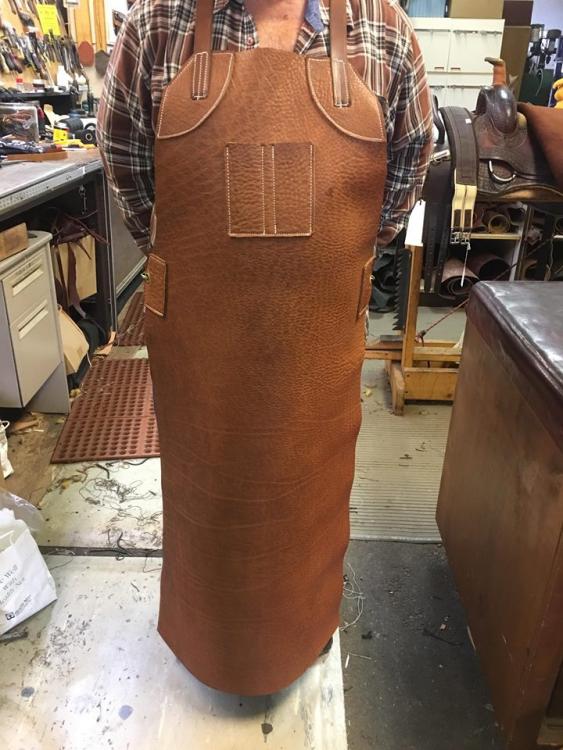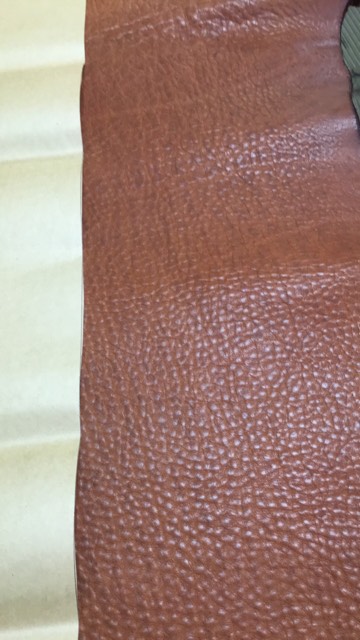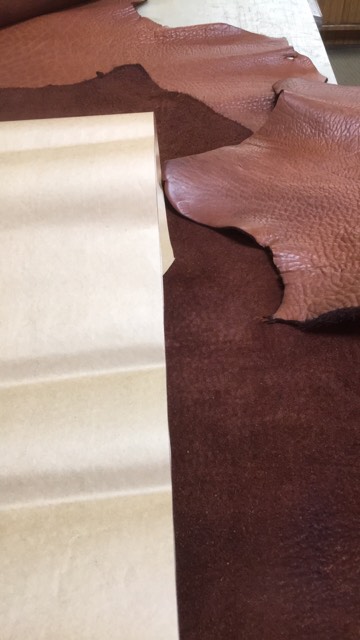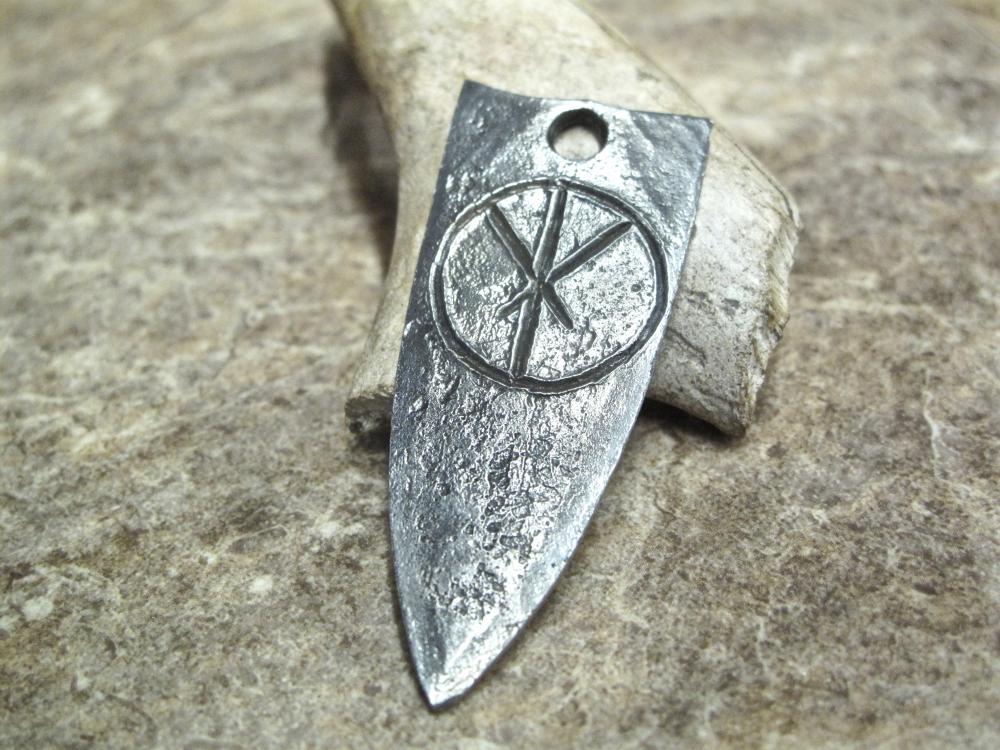-
Posts
3,586 -
Joined
-
Last visited
Content Type
Profiles
Forums
Articles
Gallery
Downloads
Events
Everything posted by VaughnT
-
I'd cut one end off just past the curve and stand it on end so you have all the mass right below the hammer-impact zone. Just turning the plank on its side will work, jut not as well (by a long shot) as if stood on end. The others could be used as swages for when you need them, but they'll also make great trade items. Those are striking anvils just waiting to be, and I'm sure a few folks would be glad to have them.
-

Show me your Bottle Openers!
VaughnT replied to Arbalist's topic in Blacksmithing, General Discussion
Nice opener design..... but I really like that ruler! I've been hunting for a short ruler like that, but all the ones I can find either have too fine a gradation or have metric as well. A 6"x1" rule that's broken down to eighths on one side and sixteenths on the other -- ooh, would that be nice to have! -
The stock does have a bump in the bottom of the hole. The only thing I can imagine is that there's some kind of bounce-back caused when you get to that last strike and can feel the anvil jus like you do if you're trying to punch a hole. On this last go around, I was extra careful to quench the tool in water after every third hit. Starting with a fresh grind, the divot formed in about ten hooks, or thirty strikes. I have been thinking about making some kind of punch like you describe. It seems like it would be a very convenient way of doing it, and I've seen it done in industrial applications. Not sure what alloy you'd want, though. It'd have to be something tough that'd stand up to the heat and not wear round on the punching part.
-
Bless you, Frosty! How long is your apron from top to bottom? I used yours as a template of sorts. While mine doesn't have a waist belt, that was intentional since the current apron I'm using doesn't require one. I always found it bothersome, pulling my shirt up whenever I moved. Like you, I opted for heavy leather that would take a blow form a disk grinder gone awry. Better to be safe than sorry! The last time I got caught by an angle grinder, it rolled right across my apron and grabbed hold of my t-shirt. Scary, for sure, and it would have been a lot worse if there wasn't a good bit of leather between the two of us! The leather is from a bull, which is fitting for a man of my stature. I can only hope that it allows me to forge to your level one day. You're a rare breed and I'm honored to know you.
-
If you don't have a cross-back strap system, you ain't in the game, hoss! There really isn't another option, and once you go with the cross-back straps, you'll smack yourself silly for ever thinking there was another way. Promise! You can go with a cheap, "make it work", kind of apron. You can buy an old chair from the Salvation Army and turn it into an apron. But the cross-back straps are the bee's knees. There really isn't an alternative! You don't have to go full-on custom like I did, but at least do yourself a favor and whip up some proper straps.
-
Thank you. When I bought my old apron, I opted for their 48" style figuring I could always cut off the excess I didn't like rather than finding myself stuck with something that was too short. Turns out, it was a really handy length. Not only was it long enough to go over my belly, but several times it stopped a piece of oh-so-hot steel from catching up on my boot! Dropped steel a few times, and each time it slid down the apron and onto the floor rather than snagging on a boot lace or whatnot. Since I work in shorts most of the time, it's very easy for hot scale or steel to catch on the top of the tongue and start burning in if the boots aren't covered up. When Giovanni asked me about length, I was real quick to ask for the same thing that'd saved me a burn or three.
-
All finished and ready for work. The grommets make it really easy to get the apron on and off, but also help relieve the stresses put on the side tie-in points as you're moving around. There's nothing as nice as cross-back straps to carry the weight of the heavy leather. Giovanni (the apron maker modeling in the pics) has a long history of working in equestrian circles, so he knows straps and buckles! Reinforced everywhere, the apron won't fail before I fail. Maybe I'll leave instructions that I'm to be buried in the thing! The texture of the Dragon Hide leather is perfect. A custom apron isn't cheap, that's for sure. But if you factor the cost over the life of the apron, it's no more expensive than buying a cheap hardware store apron every couple years as they wear out. The difference that the custom apron looks fantastic and any customers who see you in it will recognize that you take your trade seriously. I'm a happy blacksmith. A poorer blacksmith, but definitely happy!
-
Thanks gents. The problem isn't repurposing this punch into an eye punch, something I've been considering. But, the fact that it happens at all. When I saw it happen to the punch I made from a cheap chinese chipping hammer from the hardware store, I put it down to the garbage alloy they must have used. I was wrong, apparently, because this dimple formed in just a few hooks. What causes the dimple is a mystery. The only thing I can come up with is some kind of rebound effect since the only odd thing about what I'm doing is feeling the anvil through the punch when I make that last hit. It doesn't happen when I pre-drill the screw hole, even if I bottom out and the tip hits the anvil. There's got to be some weird science going on. Ausfire, it's an honor to have played a part. I love what you've done with those nails!
-
When I make some of my hooks, I like to forge in a countersink for the mounting screws. My go-to punch is made from a car coil spring, 5/8" in diameter, tapered and ground to a nice angle. I might have heat treated it back when i first made it, but I can't remember. I'm sure the HT has gone the way of the Dodo by now. Anyhow, lately I've been getting this dimple forged into the end when I forge the countersink. This one formed after just ten dimples were forged into the hooks. That might not sound bad, but when you have a few dozen hooks to make, having to stop and dress the punch is both aggravating and changes how the countersinks look -- not a good thing. Generally, I'll drive the punch in with three hits, then quench it in water. Maybe I'll add a fourth hit before quenching, but cooling the working end is certainly on the list of things to do. Most of the time, I drive it in until I can feel the anvil underneath. Not all the time, but enough.... So what's the science behind this? You wouldn't think the force of rebound off the anvil would upset the punch, driving some of it back up into itself. But, for every action there's an equal and opposite reaction. What can be done to eliminate the dreaded dimple so a punch will last longer? So far, the only thing I've come up with that definitely works is to drill the screw holes and then use the punch to make the countersink. This means the tip of the punch is actually traveling through air, not the steel, while the sloped portion forms the countersink. It also means you usually have to go back and re-dril the holes to clean them up, but it does keep the dimple from forming. Do the countersink first, though, and I seem to be stuck with the dreaded dimple.
-
The bolt lugs on the base are just cast iron, so it's no worry about seeing them snapped off. Shame to lose them, but they break off pretty easy when you torque the bolts down unevenly and such. The bits on the horn could be anything, and I'd just take them down with a file as Marc said. Quick work, that, and it'll be no bother down the road. You're very lucky to have found the face in such immaculate condition. I'd dearly love to have my Fisher's face in such great shape! Overall, you've not lost much by losing the heel. It's a convenient thing to have, but hardly the end of the world. With the horn and face in such great shape, you've got a million and one things you can do with that beauty. Or just mail her to me and don't trouble yourself!
-
I'm sure that it'll be a good apron as far as smithing aprons go. My only worry is the suppleness and how it rolls and bends with the body. Nothing worse than getting the edge of the bib jammed up under your nose or chin when you sit down! Of course, the downside to a high-end apron will be trying to keep all the fans out of my shop so I can get some work done. Being awesome is one thing, but I don't want to drive the ladies wild by going overboard on the awesomeness. I've no interest in taking Elvis' crown.
-
Marc, thanks for looking out for me! I appreciate the warning and will be sure to address your concerns with the gent doing the work. I really don't think he'd try to hornswoggle me over the matter since it'll be his name bandied about on the internet when I get it in hand. That, and he's already got something of a reputation for quality saddles and such.
-
One that caught me off guard way back in the day... I was working with a bunch of Brits, young guys and girls in their early 20's. One of the guys kinda sidled up to me and real quiet like asked where he could find a druggist so he was prepared for his evening date with one of the girls there. I just about popped him in his head for even thinking I'd know where he could score some drugs for his date. Apparently, a "druggist" is what Americans would call the corner pharmacy/store where all manner of over-the-counter medicines and other things are available. Who knew?!?! I do like running into foreigners and comparing colloquialisms. As someone outside of the south "how's yer momnem?" and they'll look at you like you've just stepped out of an asylum. Just good manners down here, though. Still trying to find a Brit who can explain the difference between a git and a twit. Neither seems like a good thing to be, but I wonder if there's a time/reason to use one over the other.
-
Got the leather sorted out, as well as the hardware. I'm calling this Dragon Hide and it'll go great with the Dragon Fangs I sometimes clean up for public display. The guy who is making the apron says this is about 7-ounce leather and still very soft and flexible. I sent him my old apron so he could use it for a pattern, so he knows what I was using and how much I liked it. This apron, though, promises to be mucho better. No expense has been spared and I fully expect this apron will last me the rest of my days if I show it a modicum of care. Stay tuned, folks. This is going to be fun!
-
That'd be worth a minimum of $2/lb in my estimation simply because it isn't just another collection of holes. Those unique shapes set it apart from the herd, and by a wide margin. You can go your entire life and never see another block like that. Now, can you get someone to pay you $5 or $8 per pound? It might be hard to find a buyer at even $2/lb. A lot depends on where you are, what the local market is like, and how you advertise the piece.
-
Thank you! I hope you both find the piece useful in the years to come! It opens the doors to a lot of design possibilities.
-
I'd find a way to get that giant shear back to the shop and running. I absolutely hate cutting little 6" lengths for the hooks I make, but cutting them with that big ol' beast would sure make things fun!! Likely to see me running all over the place finding things I could cut with it!
-
I have two 4-pound hammers that I use fairly regularly. My go-to hammer is a 3-pound cross-peen. Balance of the head is just as important as the weight, and the size/shape of the handle can make a heavy hammer more comfortable than you'd imagine. Depending on what you're doing, a 2-pound hammer might be all you need. My little 2-pound cross peen is very nice for doing leaves and such, but I'd be there all day long if I was trying to really move metal. Choking up on a heavier hammer doesn't offset the mass of the hammer. You can get a lot of work done even though your hand is right below the head. It also increases your control so you can do fine movements with the hammer rather than swapping out for something lighter.
-
Good job. You'll find that little block infinitely more handy than a big lump of iron that's nearly impossible to move. I use one similar to yours and love it. Don't think you have to get all manner of shapes into one block, either. You can make up a dozen blocks, however you like, and swap them out as needed.
-

Power hammer forging rivets,
VaughnT replied to BeaverNZ's topic in Power Hammers, Treadle Hammers, Olivers
Sweet operation. The jig is a work of art! -
I'll dig through the pics I've saved. I think the church windows are purely aesthetic, but they sure do add to the looks. As far as I'm aware, nobody makes them anymore since they don't really add to the function. Still far sexier than the standard London-Pattern anvil like we're all used to using. Size is relative since a lot of folks want a smaller anvil. Horn, no horn, big, small... a good anvil is a joy and can be found a use for.
-
That really is an awesome story. It's the American dream, of a sorts, to see something passed down through the generations like that. The family history you have tied up in the business, and how much history your shop has seen... boggles the mind. If you ever think to branch out into other anvil styles, the world dearly needs a beautiful church-window anvil.
-
200 and 400 lb anvils could certainly find favor with folks if the price is right. Made in America, too? That's really sweet to see. On them, I'd prefer a double-horn anvil with upsetting block and clipping shelf. Leaving the horn and cutting table soft means they aren't hardened and tempered like they main face is. Since you're doing the whole thing in an oven, you'd have to go back and somehow spot anneal the horn and table.
-

Big Anvil i bought, no marking, help id
VaughnT replied to phxfirefighter's topic in Anvils, Swage Blocks, and Mandrels
Very nice. Never seen an anvil like that, but without a conical horn.

